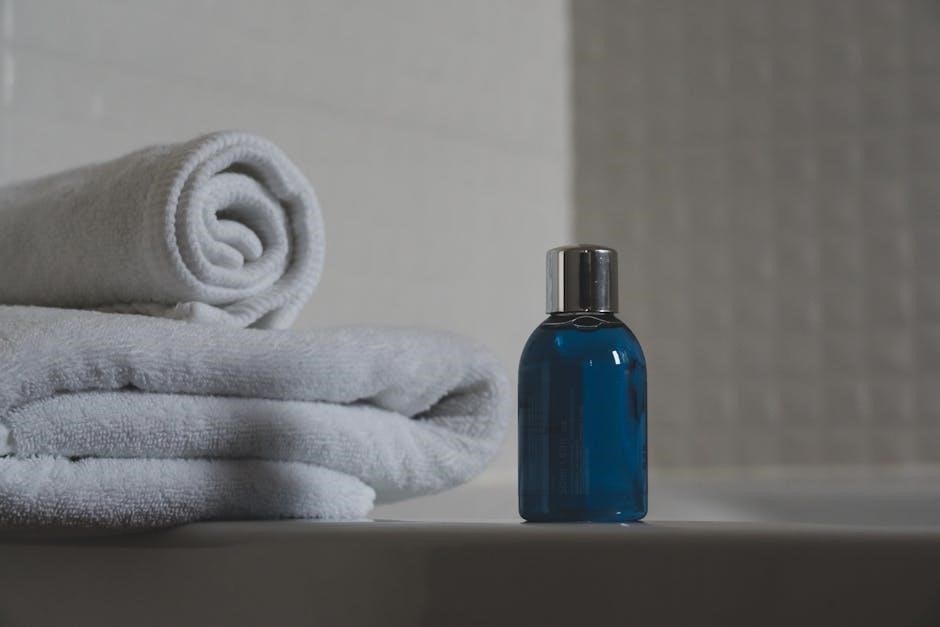blue tongue skink care guide
Discover essential tips for blue tongue skink care, including habitat setup, diet, and health tips. Ensure your pet thrives with our expert guide!
Welcome to the ultimate guide on blue tongue skink care! These charming, omnivorous lizards make wonderful pets due to their unique appearance and calm demeanor. Originating from Australia, blue tongue skinks are popular for their distinctive blue tongue and robust nature. Proper care involves understanding their dietary needs, habitat requirements, and health monitoring. This guide will provide you with essential tips and expert advice to ensure your blue tongue skink thrives. Whether you’re a new or experienced owner, this comprehensive resource will help you create an ideal environment for your pet.
Overview of Blue Tongue Skinks as Pets
Blue tongue skinks are popular reptilian pets known for their calm and gentle nature, making them ideal for both new and experienced owners. Native to Australia, these lizards are relatively small in size and have a lifespan of 15-20 years. They are omnivores, requiring a balanced diet of vegetables, fruits, and proteins. Blue tongue skinks are generally docile and can tolerate handling, though they may display stress if frightened. Their unique blue tongue is a defense mechanism to deter predators. Overall, they are a rewarding and fascinating pet for reptile enthusiasts.
Importance of Proper Care and Research
Proper care and thorough research are essential for the well-being of blue tongue skinks. Understanding their specific needs ensures a healthy, thriving pet. Without adequate knowledge, common mistakes can lead to health issues. Researching their diet, habitat, and behavior helps owners provide the best environment. Consulting experts and staying updated on care practices guarantees a happy and long-lived companion. Regular monitoring and timely veterinary care are crucial for preventing illnesses. Dedication to learning and adapting care routines is vital for these unique animals.
Diet and Feeding
Blue tongue skinks are omnivores, requiring a balanced diet of proteins, vegetables, and occasional fruits. A mix of live insects, leafy greens, and vegetables ensures proper nutrition. Avoid over-supplementation to prevent health issues. Fresh water and calcium-rich foods are essential for strong bone development. A varied diet keeps your skink healthy and active, promoting a long, thriving life as a pet.

Understanding the Omnivorous Diet
Blue tongue skinks are omnivores, requiring a balanced diet that includes both animal and plant-based foods. They thrive on a mix of live insects like crickets and mealworms, along with vegetables such as dark leafy greens and squash. Fruits can be offered in moderation as a treat. A varied diet ensures they receive essential nutrients, preventing deficiencies. It’s important to avoid over-supplementation and ensure a calcium-rich diet for strong bone health; A well-planned omnivorous diet is key to their overall health and longevity.
Feeding Frequency and Portion Sizes
Blue tongue skinks require a feeding schedule tailored to their age and size. Hatchlings and juveniles should be fed daily, while adults can be fed every other day. Portion sizes should be moderate, ensuring they finish their food within a few minutes. Overfeeding can lead to obesity, so monitor their weight and adjust portions accordingly. A balanced diet with proper frequency ensures optimal growth and health. Adjustments may be needed based on individual metabolism and activity levels.
Supplements and Nutritional Requirements
Blue tongue skinks require a balanced diet supplemented with calcium and vitamin D3 to support strong bone growth and overall health. Dusting food with a calcium supplement a few times weekly is essential, especially for juveniles. A high-quality commercial pellet should form the base of their diet, supplemented with fresh vegetables and occasional fruits. Avoid over-supplementation, as it can lead to metabolic issues. Providing a variety of nutrient-rich foods ensures they receive all necessary vitamins and minerals for optimal well-being.

Habitat Setup
Creating a natural environment for blue tongue skinks involves a spacious enclosure with proper substrate, hides, and a temperature gradient. Ensure adequate lighting for their comfort and activity.
Temperature and Lighting Requirements
Blue tongue skinks require a temperature gradient, with a basking spot of 85-95°F (29-35°C) and a cooler area around 75-85°F (24-29°C). UVB lighting is essential for calcium metabolism and preventing MBD. A photoperiod of 10-12 hours of light and 12-14 hours of darkness mimics their natural habitat. Avoid overheating by using a high-quality heat source and thermostat. Replace UVB lights every 6-8 months, as their effectiveness diminishes over time. Proper lighting and temperature are vital for their health and happiness.
Humidity Levels and Water Sources
Blue tongue skinks thrive in moderate humidity, typically between 30-50%. Maintaining proper humidity levels ensures skin health and digestion. A water bowl should always be present, even if your skink doesn’t drink visibly. Shallow dishes for drinking and larger ones for soaking are recommended. Mist the enclosure lightly 2-3 times weekly to maintain humidity and provide hydration. Ensure water sources are clean to prevent bacterial growth. Proper hydration is crucial for their overall health and well-being.
Substrate and Decor Recommendations
Blue tongue skinks prefer a substrate that allows for digging, such as sand or soil mixes. Avoid loose substrates like calcium sand, as they can cause respiratory issues. Maintain humidity by keeping the substrate slightly damp. Decorations should include rocks, logs, and plants to provide basking spots and create a natural environment. Hides are essential, even if skinks don’t use them often, as they offer a sense of security. Live plants can enhance humidity and aesthetics but are optional. A well-designed habitat ensures your skink’s comfort and well-being.

Health and Behavior Monitoring
Monitor your blue tongue skink daily for signs of illness, such as lethargy or loss of appetite. Check for injuries or changes in skin condition. Observe behavior patterns, as unusual activity may indicate stress or health issues. Regular veterinary check-ups are crucial to ensure your skink remains healthy and thriving in its environment.
Signs of Health and Common Illnesses
A healthy blue tongue skink exhibits active behavior, a robust appetite, and smooth, unblemished skin. Common illnesses include metabolic bone disease, respiratory infections, and impaction. Watch for lethargy, loss of appetite, or labored breathing, as these can indicate underlying health issues. Regular veterinary check-ups are essential to prevent and treat such conditions early. Proper diet, hydration, and habitat maintenance are key to minimizing the risk of these illnesses and ensuring your skink remains vibrant and healthy.
Behavioral Patterns and Nocturnal Activity
Blue tongue skinks are primarily diurnal but can exhibit nocturnal tendencies, especially in captivity. They often hide during the day and become active at night, seeking food and exploring their environment. Natural behaviors include basking, foraging, and digging. Owners may observe increased movement during evening hours, with skinks actively searching for food or interacting with their surroundings. Monitoring their activity patterns can provide insights into their overall health and well-being, ensuring they thrive in their habitat.
Daily Monitoring Tips for Owners
Monitor your blue tongue skink’s behavior, appetite, and physical condition daily. Check for signs of illness, such as lethargy, discoloration, or labored breathing. Ensure proper temperature, humidity, and lighting levels in their enclosure. Observe feeding habits and adjust portion sizes as needed; Clean the habitat regularly to prevent bacterial growth. Track activity patterns, noting any unusual changes. Consult a reptile vet immediately if you notice any health concerns. Regular monitoring helps maintain your skink’s well-being and ensures a thriving, happy pet.

Handling and Socialization
Blue tongue skinks can be handled gently but may not always enjoy it. Approach them calmly, ensuring they feel secure. Avoid handling during stress or hiding periods for best results.
Handling Tips for Blue Tongue Skinks
Handling blue tongue skinks requires patience and care. Start with short sessions to help them become comfortable with human interaction. Always support their body and tail to prevent stress. Move slowly and gently to avoid startling them. If they show signs of discomfort, such as flattening or hissing, return them to their enclosure immediately. Regular, positive interactions can lead to tame and trusting skinks, enhancing your bonding experience.
Understanding Their Temperament
Blue-tongued skinks have a unique temperament, often calm but can be stressed by handling. They may flatten or hiss when threatened, indicating discomfort. With patience, some become tame, while others remain skittish. Handle gently and briefly, respecting their boundaries. They are naturally curious, exploring their environment, and prefer a peaceful, safe space. Over time, they may grow more accustomed to interaction. Understanding their personality is key to building a strong bond with your pet skink.
When to Avoid Handling
Handling should be avoided when your blue tongue skink is shedding, ill, or showing signs of stress. If the skink flattens its body, hisses, or attempts to bite, it’s best to wait until it calms down. Over-handling, especially during breeding or molting seasons, can cause undue stress. Always monitor your skink’s behavior and refrain from handling if it appears agitated or unwell. Daily observation can help prevent unnecessary stress and ensure a healthy relationship with your pet.
Breeding and Reproduction
Blue tongue skinks can be successfully bred in captivity with proper conditions. Mating typically occurs in spring, and females lay clutches of 10-20 eggs requiring incubation. Breeding requires a suitable environment and diet to ensure healthy reproduction and hatchlings.
Breeding Behavior and Mating
Blue tongue skinks exhibit specific breeding behaviors, typically initiating in spring. Males display head-bobbing and vibrant coloration to attract females. Courtship involves males chasing females and performing rituals. Females signal receptiveness by remaining still, allowing males to mate. Breeding in captivity requires replicating natural conditions, including optimal temperature and humidity. Proper nutrition is crucial for both sexes to ensure successful mating and egg production. Monitor behavior closely to create a conducive environment for reproduction.
Caring for Eggs and Hatchlings
Blue tongue skink eggs require consistent incubation at 84-88°F with 80% humidity. Monitor eggs closely for signs of cracking, indicating hatching. Hatchlings emerge fully formed but rely on yolk reserves. Provide a separate, smaller enclosure with damp substrate for digging. Offer small, nutrient-rich foods like live insects and pureed vegetables. Ensure access to shallow water for hydration. Avoid over-handling hatchlings to prevent stress. Regular veterinary check-ups are essential for ensuring healthy growth and development during this critical stage.
Common Myths and Expert Tips
Contrary to myths, blue tongue skinks can tolerate handling but need gentle care. Experts advise avoiding over-handling and ensuring proper habitat setup for their well-being and longevity.
Debunking Common Misconceptions
Many believe blue tongue skinks are aggressive due to their blue tongue display, but this is a defense mechanism, not a sign of aggression. Another myth is that they require minimal care, when in fact, they need specific temperature, lighting, and dietary conditions. Some think they don’t need UVB lighting, but it’s essential for calcium metabolism. Additionally, the idea that they only eat live insects is incorrect, as they thrive on a balanced omnivorous diet. Understanding these truths ensures better care for your pet skink.
Expert Advice for Optimal Care
Experts recommend creating a naturalistic environment with proper temperature gradients and humidity levels. Ensure your skink has access to multiple hiding places to reduce stress. Avoid using loose substrates like sand, as they can cause respiratory issues. Provide a balanced diet with a mix of vegetables, fruits, and proteins, and dust food with calcium regularly. UVB lighting is essential for preventing metabolic bone disease. Lastly, schedule regular check-ups with a reptile-savvy vet to ensure your skink stays healthy and thriving.

